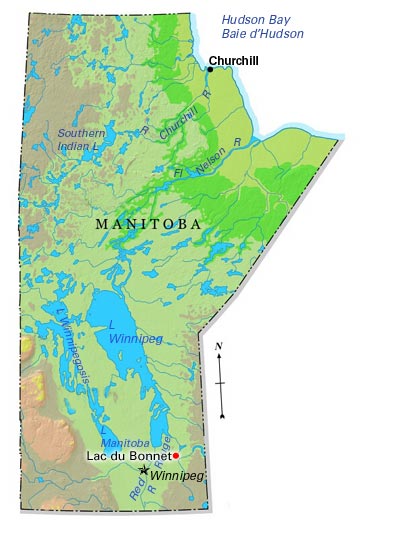Ste Anne, Manitoba, incorporated as a town in 1997, population 1626 (2011c), 1534 (2006c). The Town of Ste Anne is a bilingual community located along the Seine River 40 km southeast of WINNIPEG. It was originally known as Pointe des Chênes or Grande Pointe des Chênes ("where the oaks meet"). The origin of the name dates back to the mid 1860s when the parish of Sainte-Anne-des-Chênes was set up. The first Catholic priest to minister to the community, Father Jean-Marie Le Floch, renamed the community in honour of Sainte Anne, the patron saint of his native Brittany. The village of Ste Anne separated from the rural municipality of the same name (incorporated in 1881 and reincorporated in 1908) in 1963.
In the late 1850s Métis bison hunters began to take up land for farming and cattle rearing in the Pointe des Chênes area. The DAWSON ROAD, built through the area in 1869, was used by Colonel Wolseley and his troops during the RED RIVER REBELLION in 1869-70. The road is commemorated today by a plaque and by the annual Dawson Trail Days that are celebrated each September.
Today Ste Anne is a service and medical centre for the surrounding area. The town is also the site of a large Francophone senior's housing complex and personal care home. It is also a bedroom community for citizens who commute to jobs in Winnipeg but there are some who commute from Winnipeg to Ste Anne for employment as well. It has an impressive stone church built in 1895, one of the oldest in the province.

 Share on Facebook
Share on Facebook Share on X
Share on X Share by Email
Share by Email Share on Google Classroom
Share on Google Classroom


